 The move-in date for the new-built house was mid-July 2003. The house is a simple two-story, wood frame, unembellished square with a steeply pitched roof, kind of resembling the line drawing of a house which children sometimes do. It enjoys small, square front and back decks, and sits upon a south-facing lot that is 50 feet wide and 150 feet deep, located about 6 blocks from the northwest shore of Lake Michigan, in a small rural village with a year-round population of some 450 people.
The move-in date for the new-built house was mid-July 2003. The house is a simple two-story, wood frame, unembellished square with a steeply pitched roof, kind of resembling the line drawing of a house which children sometimes do. It enjoys small, square front and back decks, and sits upon a south-facing lot that is 50 feet wide and 150 feet deep, located about 6 blocks from the northwest shore of Lake Michigan, in a small rural village with a year-round population of some 450 people.After subtracting the footprint of the house and that of the one-car garage built on the alley behind the house, the area to be landscaped in the yard added up to about 6,400 square feet. Every single square foot of it covered in soil that was at best 10 percent topsoil, 90 percent sand blown in from the lakeshore and surrounding Sleeping Bear Dunes. Here's what grew in the yard when the builders departed and the movers unloaded the last box of worldly goods: nothing.
Prior to the commencement of construction on this new neighborhood in the village, the land had known two primary former incarnations in modern times. First, it was part of the cultivated land belonging to a farm. The original farmhouse and barn still stand about 3 blocks or so away, now enjoying new use as a bed-and-breakfast lodging. Rumor has it the farmers raised some cattle and some pigs, grew some crops, but that all ceased back around 1990, and if the soil at that time boasted the richness of livestock manure, it no longer does so.
Once the farming phase ended (with the kind of mysterious, kind of creepy disappearance and/or demise of the three reclusive bachelor-brother farmers) the land reverted to a natural dune meadow, replete with wild daisies, spotted knapweed, native grasses and shrubs such as honeysuckle, stands of wild cherry, red and white pine, walnut, maples and other volunteers. My lot had nary a tree upon it, and the grasses and weeds it supported were entirely demolished by the building of the house. Thus, on move-in day, the whole yard, front to back, offered only a long, barren lot of sand, topped up by the builder with a few inches of trucked-in topsoil.
From the get-go, my plan for the yard was to create a landscape of trees, shrubs, ornamental grasses and flowers, with wood mulch covering the empty spaces. No lawn. Having previously lived with a yard that was mostly manicured grass, the concept was to have a yard which would never require mowing, would not need regular watering over every square inch, and would instead boast a pretty, shady, low-maintenance, bird- and earth-friendly environment.
The day before the house furnishings arrived, a willing worker from a local nursery pulled up to the sandlot with a pick-up truck loaded to the gills with the nine trees and fifteen shrubs I'd chosen as the starting core of the lot's landscaping. The trees we planted that day in the front yard were a Cleveland ornamental pear and a white spire river birch, one centered on either side of the sidewalk to the front door. In the back yard, the trees were a Robinson crab apple, an October Glory maple, a Colorado spruce, a cedar, two northern white pines and a red oak. Not one of the trees stood above five feet in height, once planted, and all were in the sapling or toddler phase of their existence, this size tree being all the budget could achieve.
The shrubs planted that day in 2003 included white and dark purple lilacs, close to the front windows of the house where someday, when grown up, their wonderful scent would float indoors on the spring breezes; shasta and onondaga viburnums; American high bush cranberry; Chicago lustre viburnums; snowmound and blue mist spirea; forsythia; honeysuckle gold flame; hydrangeas; wine and roses wiegela; dark purple butterfly bush; diablo ninebark; blue girl and blue boy hollies planted side by side so as to achieve pollination and berries; and one red-bark dogwood.
Garden afficionados warn against planting trees or shrubs in high summer, sensibly, because the heat and scant rainfall do impose struggles on tender youngsters. However, when an absolutely empty yard confronts a gardener, and the sun is falling completely unshielded upon roof, walls and windows, and there arises a longing to get this party started! before another month or season of potential growth goes by, then with pluck and dedication, successful installation of trees and shrubs can be achieved in mid-summer.
Every tree got planted in about half a 40-pound sack of composted cow manure, every shrub got about a quarter-sack of same. Let the writer just say right here and now and for all time, composted cow manure is the black gold of the garden. While horse, chicken or possibly other farmyard manures can burn young plants or, reputedly, give them too much of certain elements, composted cow manure seems to be the perfect soil base and fertilizer for every plant I've ever put in the ground. The holes were filled with water before planting, and the water allowed to seep into the soil before tree or shrub was inserted. After planting, each newby got a further two or three gallons of water to drink. Shredded cypress mulch was layered about two inches thick and about a foot to two feet in diameter around each planting, keeping the mulch a couple inches away from the trunks of the trees and shrubs as the garden masters keep nagging to do. The mulch helps shade the soil and retain moisture, but apparently, tree-bark eating and infecting rodents and insects will set up shop in it if it's too close to the trunks.
Then followed weeks and months in which every tree and shrub got a visit from a very slowly running hose for about half an hour or more, twice weekly (except when Mother Nature gave the hose a day off by providing rain). This period of watering would soak the area around tree or shrub out past the circumference of the roots, and was undertaken just to ensure that this expensive and already beloved congregation of plantings did not die of thirst. The only fertilizing done in supplement to the compost entailed a couple tablespoons of Dr. Schultz's liquid fertilizer (highly recommended) in a couple gallons of water, once after the plantings had been in the ground a month or so, and again in early fall.
The aggressive watering schedule was kept up for at least the first two years, starting each spring in May and continuing up to the first hard frost of fall. Unless you live in a very rainy climate, my experience suggests that watering trees and shrubs well, twice weekly, is the best bet to foster their survival and growth. All my trees and shrubs survived with one exception, most are doing very well (more individual details in a later entry), and the birch and Cleveland pear, in five years' time, have grown to heights of about 30 feet and 20 feet, respectively, with thick, solid trunks and dense foliage. The one tree that did not make it was the cedar, browned to its needles tips and killed after two years by, I suspect, a combination of the high wind factor on my lot, straight off Lake Michigan and not infrequently in the 15 to 30 miles per hour range (like once a week or so), and its exorbitant thirstiness, a characteristic known only after it had been purchased.
On a day shortly after the big tree planting, the writer happened to be on hands and knees in the front yard, introducing a lavender plant into the ground next to the front walk. A gawker (of which far too many cruised the streets of the neighborhood in those early days, checking out the newcomers and building sites), pulled to the curb and yelled a couple questions to me about the houses going up. Mine happened to be the first built and occupied, the second neighbor wouldn't move in for four months. Questions answered, this gentleman went on to observe something to the effect of how pointless it seemed to him to be putting a plant in a big, sun-baked, mostly empty yard. My only response was, well, one has to start somewhere, which was really obvious to me and is as well, I'm certain, to every gardener who ever daydreamed even a pot of pansies or a bed of rangy bee balm, rising to soften and accessorize an otherwise blank space.
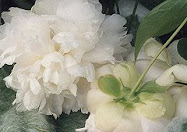
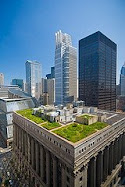

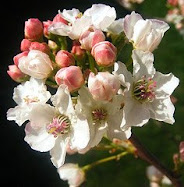
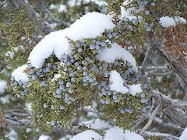


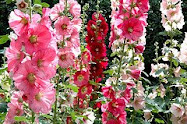

2 comments:
What a great starting post... and I agree with you, everyone has to start somewhere!
I love the Sleeping Bear Dunes area--I was up there for work a couple of years ago. We wandered around Frankfort, and walked out to the lighthouse... I got to walk barefoot through the sand dunes there and splash around in a chilly Lake Michigan. Some of the houses near the lakeshore there are what I pictured when you talked about your sandy lot, by the way--although I still can't imagine anything in that area being a zone 7. Isn't it really cold when the snow and wind come off of the lake in the winter?
Oh, we also found the Cherry Hut and bought as much cherry butter, sour cherry preserves and cherry BBQ sauce as we could afford... not to mention a couple of cherry pies. Heavenly. That convinced me to plant my own sour cherry trees in my sandy (for this area, anyway) lot here on Lake Erie!
Hi Mary! Robin from Garden Goods here. Thanks for sending me the e-mail about your site. Love reading about one of our great customers' gardening experiences. I will bwe checking in with you often. The site is beautiful.
Post a Comment